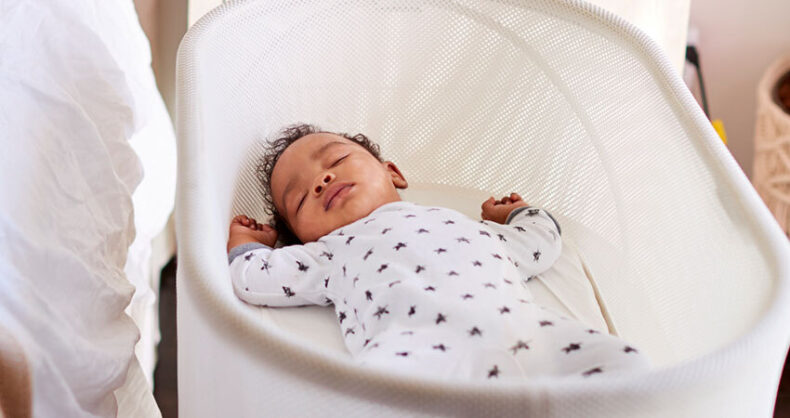The first few weeks with a newborn are a beautiful, overwhelming blur. You’re learning a new language—the unique cries, snorts, and squawks that communicate your baby’s needs. While it might feel like an endless cycle of feeding, changing, and soothing, you’re building the foundation for your little one’s well-being. But with so much conflicting information out there, how do you know what’s right? The latest research for 2025 points to a more responsive, personalized approach. Forget rigid schedules and embrace a routine that focuses on connection, mental health, and understanding your baby’s unique cues. We’re here to help you navigate this incredible journey with confidence and a sense of calm.
Navigating Newborn Sleep: The 2025 Approach
Sleep is one of the biggest challenges for new parents. In 2025, the conversation has shifted from “sleep training” to “sleep shaping.” This is a gentle, responsive method that focuses on setting healthy habits from day one without leaving your baby to cry it out.
Understanding Newborn Sleep Cycles
Newborns don’t have a circadian rhythm yet. They can’t tell the difference between day and night, which is why they sleep in short bursts around the clock. Over the first few months, their sleep will consolidate into longer stretches. A recent study published in the Journal of Pediatric Sleep Medicine in late 2024 found that consistent light exposure and a predictable bedtime routine can help establish this rhythm faster.

Creating a Safe and Soothing Sleep Environment
Safe sleep is non-negotiable. The American Academy of Pediatrics (AAP) and the CDC have strict guidelines to reduce the risk of SIDS (Sudden Infant Death Syndrome).
- Always place your baby on their back to sleep, for every nap and every night.
- Use a firm, flat mattress in a crib, bassinet, or play yard that meets modern safety standards.
- Keep the sleep space clear of all soft objects, including blankets, pillows, bumpers, and stuffed animals.
- Consider room-sharing for at least the first six months, but never bed-sharing.

In 2025, many parents are also turning to tech-integrated solutions, but with caution. While AI-powered smart monitors can track sleep patterns and provide data, a 2025 report from the World Health Organization (WHO) warns that some wearable monitors and sensor pads may increase parental anxiety without a proven reduction in SIDS risk. Always prioritize basic safe sleep practices over tech.
Nourishing Your Baby: Feeding in the First Weeks
Feeding is a primary way you connect and care for your baby. Whether you choose to breastfeed, formula feed, or use a combination, the most important thing is that your baby is getting enough to eat and you are supported in your feeding journey.
Breastfeeding and Formula Feeding 101
Breastfeeding is often recommended by organizations like the WHO and UNICEF for its nutritional benefits and ability to boost the baby’s immune system. Responsive feeding is key. This means feeding your baby whenever they show hunger cues, like rooting, lip-smacking, or bringing their hands to their mouth. Crying is a late sign of hunger, so try to feed before they get to that point.
A significant 2025 study from Rutgers University highlighted that the composition of breast milk changes throughout the day, acting as a biological clock for the baby. This new information reinforces the importance of feeding on demand whenever possible.
For parents who choose to formula feed, modern formulas are designed to mimic breast milk’s composition and provide all the necessary nutrients.
Signs Your Baby is Getting Enough
It’s easy to worry, but these signs can offer peace of mind:
- Wet Diapers: In the first week, count one wet diaper per day of life (e.g., two on day two, three on day three). After the first week, your baby should have 6-8 wet diapers every 24 hours.
- Stool: After the first few days, your baby’s stool should change from black meconium to a yellowish, seedy texture for breastfed babies, or a tan/yellow, thicker consistency for formula-fed infants.
- Weight Gain: Your baby will lose some weight initially, but they should be back to their birth weight by 10-14 days. Regular check-ups with your pediatrician will confirm they are growing well.

Parental Wellness: The Ultimate Care Tactic for 2025
The biggest trend in 2025 parenting isn’t a product—it’s a paradigm shift toward parental mental health. A supported, rested parent is better equipped to care for a baby. The idea of the “village” is making a strong comeback, and it’s okay to ask for help.
Coping with Sleep Deprivation
It’s one of the most significant challenges new parents face. A report from a 2025 mental health summit on postpartum wellness emphasizes that splitting night shifts with a partner, even for a few hours, can make a significant difference. Try a simple plan: one partner handles feedings and changes from 9 PM to 2 AM, and the other takes over until 7 AM.
Managing the Emotional Rollercoaster
The “baby blues” are common, but if feelings of sadness, anxiety, or irritability persist for more than a few weeks, it’s crucial to seek help. Postpartum depression and anxiety are real and treatable.
- Be Kind to Yourself: No one is perfect. Trust your instincts and let go of the pressure to do everything “right.”
- Communicate: Talk to your partner, a friend, or a family member about how you feel.
- Don’t Isolate: Find a parent group or a community. Sharing your experience can be incredibly validating.
The National Institute of Mental Health (NIMH) has a range of resources for new parents, including hotlines and support groups. Don’t hesitate to reach out.

Baby’s Development & Daily Care
Your baby is doing more than just eating and sleeping; they are constantly learning and growing. Simple daily care routines are the perfect opportunity for you to bond and support their development.
Diapering & Skin Care
Frequent diaper changes are a cornerstone of newborn care. This simple act prevents rashes and is a great time to talk, sing, or make eye contact with your baby. For skin care, less is often more. The American Academy of Dermatology recommends using a gentle, fragrance-free cleanser and lotion, and avoiding heavily scented products that can irritate sensitive newborn skin.
Tummy Time
Tummy time is essential for a baby’s physical development. It helps strengthen their neck, shoulder, and core muscles, which are crucial for later milestones like rolling over, crawling, and sitting up. Start with just a few minutes a day and build up gradually. It can be as simple as placing them on their belly on your chest while you recline.
Early Communication & Bonding
Your baby is communicating with you long before they can talk. You can foster this by:
- Skin-to-Skin Contact: Holding your baby against your bare chest helps regulate their temperature, heart rate, and breathing, and it releases oxytocin, the “love hormone,” for both of you.
- Talking & Singing: Your voice is the most soothing sound to your baby. Talk to them about what you’re doing, sing songs, and read aloud.
- Responding to Cues: This is the core of responsive parenting. When your baby cries, responds quickly. This builds trust and teaches them that their needs will be met.
